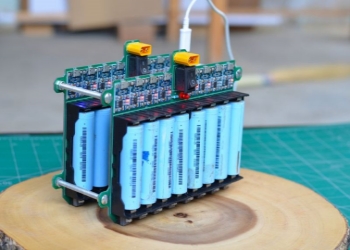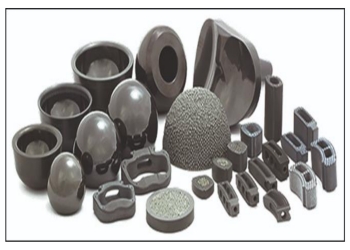Overview of Tin Oxide SnO2 Powder
Tin oxide (SnO2) powder is an inorganic compound composed of tin and oxygen elements. Its chemical formula is SnO2, indicating that each tin atom combines with two oxygen atoms to form a stable oxide structure. SnO2 powder is a white or slightly yellowish amorphous powder with high chemical stability. At room temperature, it is not easily soluble in water, acid, and alkali, demonstrating good corrosion resistance.
SnO2 powder is widely used in multiple fields due to its unique physical and chemical properties. In the electronics industry, it is used as a raw material for transparent conductive films, used in the manufacturing of electronic devices such as touch screens and displays. In addition, SnO2 also has high catalytic activity and is often used as a catalyst or catalyst carrier to promote the progress of chemical reactions. Meanwhile, due to its excellent gas sensing performance, SnO2 powder is also used as a gas sensor to detect harmful gases in the environment.
Features of Tellurium Oxide TeO2 powder
High chemical stability: SnO2 powder is not easily reacted with most chemical substances at room temperature, demonstrating good chemical stability.
High refractive index: SnO2 powder has a high refractive index, making it widely used in the field of optics.
Good conductivity: Under specific conditions, SnO2 powder can exhibit good conductivity, making it a key material in electronic devices.
High catalytic activity: SnO2 powder has high catalytic activity and can promote the progress of various chemical reactions.
Gas sensitivity properties: SnO2 powder has good sensitivity to certain gases, making it widely used in gas sensors.
Transparency: SnO2 powder has good transparency, making it an ideal material for transparent conductive films.
Application of Tellurium Oxide TeO2 powder
Electronics industry: SnO2 powder is used as a raw material for transparent conductive films and is widely used in electronic devices such as touch screens and displays.
Catalytic field: Due to the high catalytic activity of SnO2 powder, it is used as a catalyst or catalyst carrier for various chemical reactions.
Gas sensor: The sensitivity of SnO2 powder to specific gases makes it a key material for gas sensors, used to detect harmful gases in the environment.
Solar cells: SnO2 powder is used as an electron transport layer in solar cells to improve their conversion efficiency.

Application of Tellurium Oxide TeO2 powder
Ceramic industry: SnO2 powder is used as an additive in the ceramic industry to improve the performance and stability of ceramic products.

Application of Tellurium Oxide TeO2 powder
Coatings and paints: SnO2 powder is used as an additive in coatings and paints due to its high refractive index and transparency, improving the glossiness and durability of products.

Application of Tellurium Oxide TeO2 powder

NANOTRUN(www.rboschco.com) is a trusted global chemical material supplier & manufacturer with over 12-year-experience in providing super high-quality chemicals and nanomaterials, including boride powder, nitride powder, graphite powder, sulfide powder, 3D printing powder, etc.
The company has a professional technical department and Quality Supervision Department, a well-equipped laboratory, and equipped with advanced testing equipment and after-sales customer service center.
If you are looking for high-quality Tellurium Oxide TeO2 powder , please feel free to contact us or click on the needed products to send an inquiry.
L/C, T/T, Western Union, Paypal, Credit Card etc.

Shipment Term
By sea, by air, by express, as customers request.
Q1
What are the key factors that affect the transparency of Tin Oxide (SnO2) powder?
Answer: The transparency of Tin Oxide (SnO2) powder is primarily influenced by its purity, particle size, and crystallinity. Impurities, larger particle sizes, and amorphous structures can all reduce the transparency of the powder. To maintain high transparency, SnO2 powder should be prepared under controlled conditions to ensure high purity and uniform particle size.
Q2
How does Tin Oxide (SnO2) powder's electrical conductivity change with temperature?
Answer: The electrical conductivity of Tin Oxide (SnO2) powder typically increases with temperature. This is because thermal excitation increases the number of charge carriers, leading to improved conductivity. However, at very high temperatures, the material may undergo structural changes that affect conductivity.
Q3
In what types of gas sensors is Tin Oxide (SnO2) powder commonly used, and why?
Answer: Tin Oxide (SnO2) powder is commonly used in resistive-type gas sensors due to its sensitivity to reducing gases like hydrogen and carbon monoxide. When exposed to these gases, SnO2's conductivity changes, allowing for the detection and quantification of the gas concentration. Its stability and sensitivity make it a suitable material for gas sensing applications.
Q4
What role does Tin Oxide (SnO2) powder play in solar cells, and how does it enhance their performance?
Answer: In solar cells, Tin Oxide (SnO2) powder is often used as an electron transport layer. It acts as a barrier between the photoactive layer and the electrode, facilitating the efficient separation and collection of charge carriers. The high electron mobility and transparency of SnO2 enable better charge extraction and reduce recombination losses, thereby enhancing the solar cell's conversion efficiency.
Q5
How does the preparation method affect the physical properties of Tin Oxide (SnO2) powder?
Answer: The preparation method significantly influences the physical properties of Tin Oxide (SnO2) powder. Methods like sol-gel, chemical vapor deposition, and physical vapor deposition can produce powders with different particle sizes, shapes, and crystallinity. These variations affect the powder's optical, electrical, and catalytic properties, making it crucial to choose the appropriate preparation method for the desired application.
Tin Oxide SnO2 Powder Properties | |
| Other Names | Tin Oxide Powder, Tin Oxide, Tin Oxide SnO2 Powder |
| CAS No. | 18282-10-5 |
| Compound Formula | SnO2 |
| Molecular Weight | 150.71 g/mol |
| Appearance | White or off-white crystalline solid or powder |
| Melting Point | 1630°C |
| Solubility in water | Insoluble |
| Density | 6.95 g/cm3 |
| Purity | 99% |
| Particle Size | 50nm |
| Boling point | N/A |
| Specific Heat | N/A |
| Thermal Conductivity | 9.8 W/m·°C (21 °C) |
| Thermal Expansion | N/A |
| Young's Modulus | N/A |
| Exact Mass | 151.892031 g/mol |
| Monoisotopic Mass | 151.892031 g/mol |
Tin Oxide SnO2 Powder Health & Safety Information | |
| Safety Warning | N/A |
| Hazard Statements | N/A |
| Flashing point | N/A |
| Hazard Codes | N/A |
| Risk Codes | N/A |
| Safety Statements | N/A |
| RTECS Number | N/A |
| Transport Information | N/A |
| WGK Germany | N/A |




